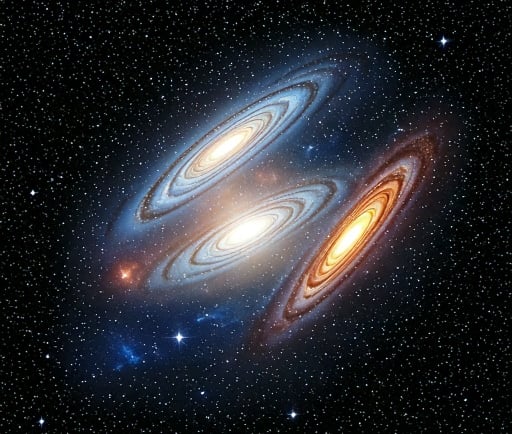The Leo Triplet: A Closer Look at the Small Group of Galaxies


Introduction to the Leo Triplet
The universe is a vast sea of celestial wonders, and within its depths lies the Leo Triplet, a fascinating collection of galaxies that captivates astronomers and casual stargazers alike. This small group of three interacting galaxies is known as the M66 group, which includes M65 and NGC 3628. Located approximately 35 million light-years away in the constellation Leo, these galaxies offer a captivating glimpse into the dynamics of galactic interactions.
The Components of the M66 Group
The Leo Triplet is composed of M65, M66, and NGC 3628, each contributing to the overall charm and complexity of the group. M65 is a spiral galaxy characterized by its bright core and striking spiral arms, which give it a majestic appearance. M66, on the other hand, is slightly more distorted, a result of its interaction with the other members of the group. This galactic disturbance can often lead to the formation of new stars, making it a hotspot for astronomical study.
NGC 3628, classified as an edge-on spiral galaxy, presents a unique profile that adds diversity to the trio. Its dust lane, which cuts through its body, is indicative of the material that is being consumed and formed into new stars. The interplay between these three galaxies not only provides a stunning visual spectacle but also serves as a laboratory for understanding the effects of gravitational interactions in a galactic context.
Significance of the Leo Triplet in Astronomy
The M66 group has garnered significant interest within the astronomical community due to its compact size and dynamic interactions. One of the crucial areas of study is how gravitational forces shape the structure and behavior of galaxies over extended periods. The ongoing interactions between the Leo Triplet members create tidal forces that warp their shapes and can trigger bursts of star formation.
Moreover, studying the Leo Triplet allows astronomers to gather insights into the evolution of galaxies. The three galaxies provide a natural laboratory for investigating the processes that govern galaxy formation and growth. With advancements in telescope technology and continual observations, researchers aim to unlock more secrets of this intriguing group of galaxies.
In conclusion, the Leo Triplet, comprising M65, M66, and NGC 3628, stands out as a remarkable example of galactic interaction within the universe. Located in the constellation Leo, its proximity to Earth makes it an accessible subject for study, and its dynamic characteristics continue to fuel scientific inquiry. As we delve deeper into the universe's mysteries, the M66 group will undoubtedly play a critical role in our ongoing quest for knowledge about the cosmos.
